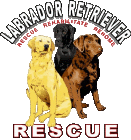About Labrador Retrievers
Generally speaking, Labs are happy, friendly souls, but they are very easily bored. Labs have above average intelligence and learn quickly. Labrador Retrievers make great family members and usually get along well with children and other pets. They will alert you to strangers, but are not “guard dogs”, although they will offer protection to the best of their ability. Above all, they give unconditional love. Your Labrador Retriever deserves love and respect from their entire family.
Labrador Retrievers come in three solid colors: black, yellow, and chocolate. Do not confuse the yellow Labrador Retriever with the Golden Retriever, or the chocolate Labrador Retriever with the Chesapeake Bay Retriever. These are completely different breeds.
The AKC Standard
Show Quality
The Labrador should be short, stocky, and strong. The dog should have a wide skull, wide deep chest (sort of a box type look). The most noticeable traits include:
- Tail: thick towards the base, tapering towards the tip, medium length, free from feathering (aka. “Otter” tail).
- Coat: short and dense without wave (occasionally you will find a longer softer coat).
- Ears: medium size, close to head (ears do not go up and then drop down), and triangular in shape.
- Feet: webbed, especially on back feet, toes should tuck under, not be long and thin.
Field Quality
These Labradors are usually of taller stature, with a leaner body and a longer nose.
- Tail: same as described above with no feathering.
- Coat: the coats may vary, some may be the same as above, others may be longer and wavy.
- Ears: same as above.
- Feet: same as above, although often longer and slimmer.
Read more about the Labrador Retriever in detail (Reprinted from the Project BREED Directory Series) or view the American Kennel Club (AKC) full background and description of the Labrador Retriever.





